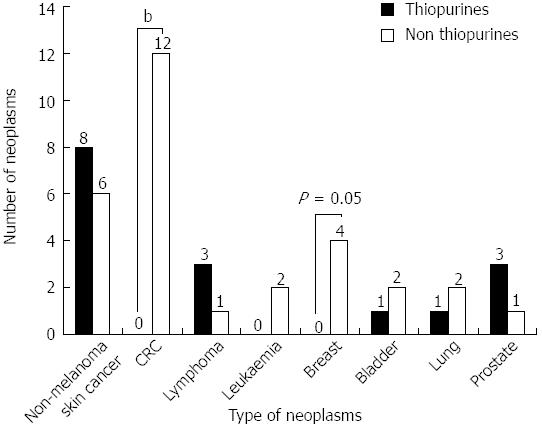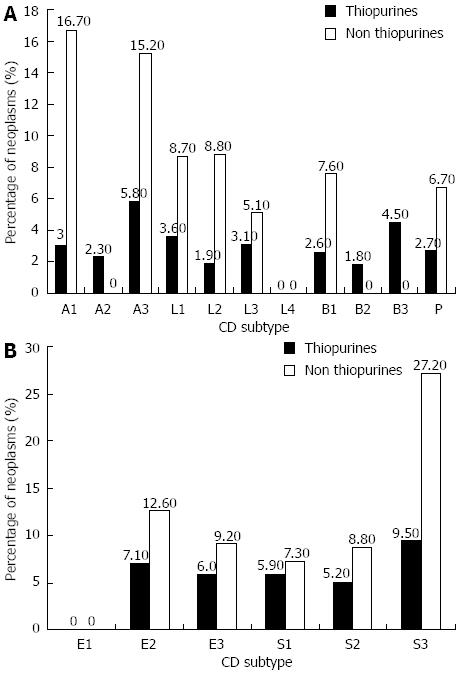Copyright
©2013 Baishideng Publishing Group Co.
World J Gastroenterol. Aug 14, 2013; 19(30): 4877-4886
Published online Aug 14, 2013. doi: 10.3748/wjg.v19.i30.4877
Published online Aug 14, 2013. doi: 10.3748/wjg.v19.i30.4877
Figure 1 Types of neoplasms (n = 53).
The most frequent neoplasms were non-melanoma skin cancer, colorectal cancer and haematological (lymphomas and leukaemia).
Figure 2 All the neoplasms, except for non-melanoma skin cancer, lymphomas and prostate, have been more common in patients not treated with thiopurines, however, significant differences have only been identified in colorectal and breast cancer.
Non thiopurines vs thiopurines, bP value < 0.01 (OR = 0.96, 95%CI: 0.94-0.98); P value = 0.05 (OR = 0.99, 95%CI: 0.98-1).
Figure 3 There seem to be no statistically significant differences in the appearance of neoplasms in any of the locations, behaviours or ages of diagnosis of the patients with Crohn’s disease and ulcerative colitis in relation to thiopurines intake.
A: Percentage of neoplasms according to Crohn’s disease (CD) subtype; B: Percentage of neoplasms according to ulcerative colitis (UC) subtype.
- Citation: Gómez-García M, Cabello-Tapia MJ, Sánchez-Capilla AD, Teresa-Galván JD, Redondo-Cerezo E. Thiopurines related malignancies in inflammatory bowel disease: Local experience in Granada, Spain. World J Gastroenterol 2013; 19(30): 4877-4886
- URL: https://www.wjgnet.com/1007-9327/full/v19/i30/4877.htm
- DOI: https://dx.doi.org/10.3748/wjg.v19.i30.4877















